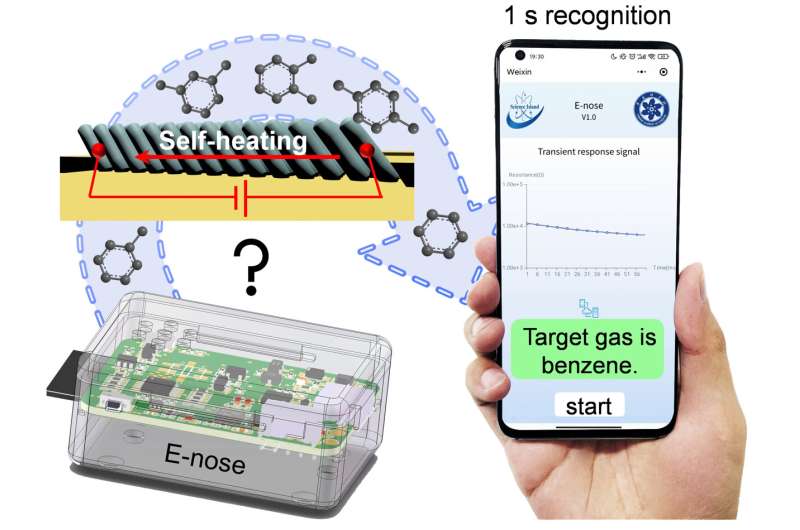This article has been reviewed according to Science X's editorial process and policies. Editors have highlighted the following attributes while ensuring the content's credibility:
fact-checked
trusted source
proofread
Smart e-nose uses self-heating temperature modulation to enable rapid identification of gas molecules

A recent study published in ACS Sensors highlights the development of a smart electronic nose (e-nose) by a research team led by Prof. Meng Gang from the Hefei Institutes of Physical Science of the Chinese Academy of Sciences.
The novel e-nose utilizes a self-heating modulation strategy to accurately distinguish different types of target gas molecules within just one second.
Significant progress has been made in gas molecule detection using e-nose comprised of non-selective semiconductor gas sensors. However, extracting adequate molecular features in a short time (<1 second) remains a major obstacle, which hinders the early warning applications of e-nose for lethal or explosive gases.
In this study, an innovative approach for temperature control and modulation was developed as an alternative to the conventional method using external heaters. A tungsten trioxide (WO3) nanorod film prepared by oblique angle deposition (OAD) was used as both a sensitive sensing layer and a stable self-heating layer. Due to the ultrafast (~20 μs) thermal relaxation time, the OAD WO3 sensor can generate sufficient electrical response features via self-heating temperature modulation.
This advancement has led to the accurate discrimination of 12 gas molecules within 0.5–1 seconds, which is one order faster than the state-of-the-art e-noses.
In addition, a smart wireless e-nose system was developed to enable accurate and instantaneous identification of target gases in ambient air backgrounds.
This development demonstrates the potential applications of the e-nose in homeland security and public health, according to the team.
More information: Meng Li et al, Prompt Electronic Discrimination of Gas Molecules by Self-Heating Temperature Modulation, ACS Sensors (2023). DOI: 10.1021/acssensors.3c01839
Provided by Chinese Academy of Sciences





















